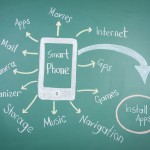The rise in beacon use is causing some concern and speculation among consumers. These fears are not unusual. New technologies often cause concern, which tends to dissipate as users become more familiar with the technology’s capabilities and benefits. Beacons are no different. Because consumers are used to the location-tracking capabilities of GPS, many assume that beacons have the power to find and identify them, and then extract their personal information or track their movements.
In reality, beacons have none of that capability.
A Beacon Is Not a Location-Tracking Device
A beacon is a small device that transmits an identifying code, essentially saying, “I’m here! I’m here! I’m here!” over and over, to any device that is programmed to listen. To interact with the beacon, a Bluetooth-enabled mobile device must be loaded with an application that will recognize the beacon’s code and trigger an interaction with the server. From there, the device and the server communicate—the beacon’s job is done.
Learn more in our eBook: Location Technology 101: Understanding Bluetooth, Blue Dot, Beacons, Geo-Fencing and More.
Power to the People
The power isn’t really in the beacon; the power is in the hands of the user.
When users download an application, they do so because they believe the application will benefit them in some way, either by entertaining them, giving them information or discounts, allowing them to connect or shop, or otherwise delivering content to them that they care about. They realize that in exchange for this benefit, they must allow the application to collect information about them—that’s how the application knows what content they care about. And of course, the brand benefits as well: it gains deeper insight into its users’ demographics and buying behavior. Beacons simply help make this exchange more relevant.
With beacons, brands can instantaneously reward users with relevant benefits. Imagine taking a trip to the museum:
- Prior to arriving, the user downloads the museum application to his smartphone. The application asks for some identifying information and for permission to respond to Bluetooth signals.
- Once the user arrives at the museum, the smartphone recognizes the Bluetooth ID emitted by a beacon near the museum entrance. The smartphone understands that this ID is for the museum application and wakes up that application on the user’s phone.
- The museum application then sends a message welcoming the user to the museum. As the user moves through the museum, the application “hears” the call of the beacons placed at each exhibit. When the user comes within range of a beacon, the application sends detailed exhibit information directly to the user’s phone.
- Finally, as the user leaves the museum, the beacon at the exit broadcasts a Bluetooth ID to the mobile phone. The phone sends a message to the user thanking him for his visit and a link encouraging him to support the museum with a donation or to return for the next big exhibit.
- In this scenario, the Bluetooth beacon never tracked the user, nor did it transmit personal information. The beacon was only a signpost that made it possible for the application to provide the user with the location-specific benefits he requested. Personal information was always within the user’s control. Bluetooth communication was always within the user’s control.
Beacons Are Your Friend, and Friends Respect Boundaries
All friendships require honest communication and boundaries. Bluetooth beacons are no different. They can only communicate with users when they are enabled, and they only communicate to the relevant application. Beacons are the best kind of friend because the user sets the boundaries and the beacon is happy to comply.
For more information about how enterprises across industries are using mobile software and location-enabled hardware to enhance the customer experience, download our on-demand webinar: Mobile at the Intersection of Hardware and Software.








